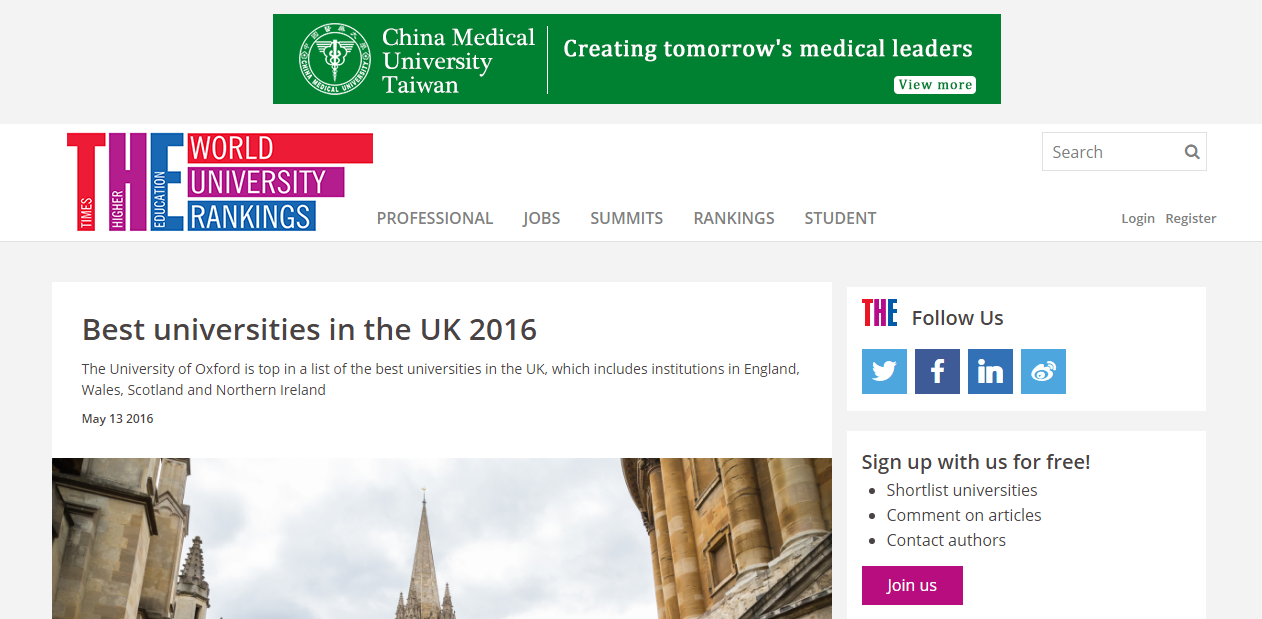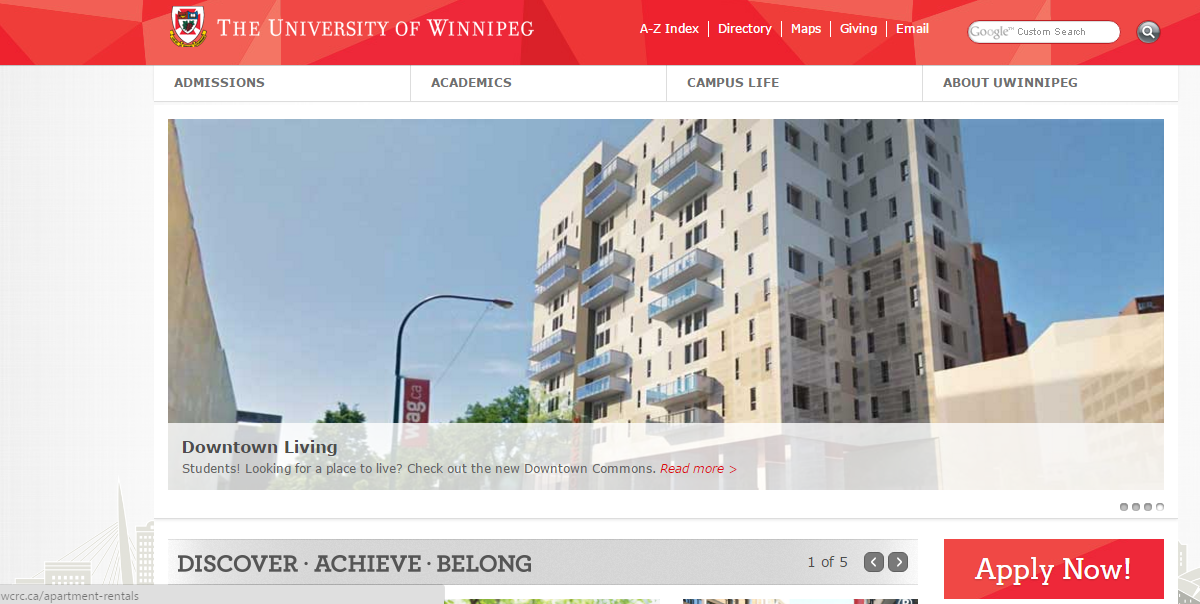
As digital marketing becomes more sophisticated, personalisation has become an increasingly accepted part of online life. Think of how online retail sites like Amazon and eBay offer recommendations based on your previous purchases, or how news outlets allow users to set preferences so they’ll be shown more stories that interest them. No matter where you turn on the internet, organisations are adding personalised elements to provide users with a more unique, customised experience.
With that in mind, an increasing number of schools are now seeking to incorporate elements of personalisation into their online recruitment initiatives. With both millennials and Generation Z growing up as digital natives, many argue that today’s prospective recruits not only expect personalised browsing and targeted campaigns, but welcome these elements as indicators that your school sees their specific, individual needs and motivations as a priority.
Read on to find out some ways you can personalise your student experience.
1. Use Student Journey Mapping to Deliver Targeted Higher Education Content Marketing
If your school has a well-developed student recruitment strategy, it’s likely you have clearly defined student personas, and have conducted detailed research into the demographics your prospective applicants fall into, as well as their most common motivations and concerns.
However, it’s important to remember that even among your most common targeted demographic groups, not every prospective student who visits your website will be at the same stage of interest in your school. Some will be hearing about it for the first time, while others will have already done extensive research and may even have applied already.
With that in mind, it’s important to be able to further segment your targeted personas in order to provide content that speaks to their concerns and motivations at every stage of the decision-making process. To accomplish this, recruiters use a technique known as journey mapping, which defines common touchpoints students typically reach before making an application- such as visiting a program page, or receiving recruitment emails- and places them alongside the stages of a traditional sales funnel:

By clearly defining and pinpointing different stages of the enrollment journey, schools can produce more targeted online student recruitment campaigns that engage prospective leads every step of the way. This can help you refine and personalise your strategy in a number of areas, including:
- Content- Your blogs, website articles, and other content offerings should be tailored to appeal to prospective students at different stages of the enrollment journey. Once you have designed a student journey map, you can audit your existing onsite content, categorising each page to identify prospective students who aren’t being catered to.
For example, you might find that your content is geared too much towards prospects who are seriously interested or have already applied to your school, and resolve to provide more pieces for potential leads in the ‘awareness’ stage of the student journey.
Example: This blog post from Falmouth University “4 Exciting Careers in Creative App Development” would probably fall into the ‘awareness’ stage of the customer journey, as it provides more general information about the app development industry for interested students.

The University also provides posts for prospective leads who have moved past that stage and developed a firmer interest in the college, such as this post ‘How Flexible Learning Provides Full Support to MA students’ which provides more specific information about their course delivery.

- Advertising- Journey mapping can also be used to better segment and target your PPC and digital display ads, helping to maximise their effectiveness and reduce waste in your advertising budget. By considering them alongside different stages of the student journey, PPC ads and their accompanying landing pages can be worded to more effectively engage students during different stages of the decision making process. Your school can also bid on keywords that recruits at particular stages of the student journey are more likely to use in their searches, helping you to further refine your approach.
During the early stages of the student journey, you can use behavioural targeting tools such as Google AdWords in-market audiences function and interest targeting in Facebook to find prospects whose online behaviour corresponds with that of your targeted personas. In addition, you can develop display advertising that targets specific websites that prospective recruits might use for research, such as university comparison sites and career websites.
Example: China Medical University Taiwan are currently running a banner ad campaign on the homepage of the Times Higher Education website. THE’s World University Rankings are universally respected, meaning that a number of highly qualified prospective recruits around the world are likely to use the site to research destinations on the site during the ‘awareness’ stage.

- Email Lead Nurturing Campaigns- Journey mapping can also be useful in segmenting your mailing lists to conduct more personalised email marketing campaigns. Rather than sending out generic, ‘one size fits all’ mails, you can divide prospective recruits into crucial touchpoints on their enrollment journey, identifying candidates who have scheduled interviews or signed up at recruitment fairs, for example.
This will allow you to prepare customised messages for each group, providing useful information and linking to targeted content on your website which is relevant to their stage of the enrollment journey. These campaigns can then be further refined by performing A/B testing and monitoring unsubscribe , open, and click-through rates, helping you to identify the best ways to connect with prospective recruits at every stage of the decision-making process.
2. Conduct Heat Map Analysis to Optimise Your School’s Website Content
An emerging and currently less widely used personalisation tool, heatmap analysis measures how users view and interact with your webpages. This can be done through either eyetracking programs, which use cameras and software to monitor exactly what a user views on a web page, or mousetracking, which measures mouse movement to estimate where on the screen a person’s eyes are focused.
Eyetracking is more accurate than mousetracking, but also more costly to implement, and since cameras are required, is usually only conducted in small studies and market research focus groups. Mousetracking on the other hand, can be done in real-time with visitors to your website, and is available through a number of well-known providers such as Crazyegg and Clicktale. Free options such as Clickheat and Corunet are also available.
Example: Crazyegg are one of the leading providers of heatmap tools, and you can see a number of illustrations of what a typical webpage analysis might look like on their website.

Heat map analysis can be used to quickly identify simple errors in the arrangement of your content, such as pages which contain too much text with few images, or ‘banner blindness,’ where site visitors automatically ignore parts of your webpage which contain ads.
The technique has also led to a number of new insights into browsing behaviour for web designers and marketers. For instance, a heat map study conducted by Nielsen Norman revealed that web users will seldom scroll down for information, with the average user spending only 19.7% of their time ‘below the fold’ on a page.
Conducting a heat map analysis of visitors to your school’s website can also reveal a number of more specific insights into your layout. For instance, an unnamed university who are clients of Siteimprove, a marketing software firm who offer their own heat map analysis tool known as Behavior Maps, used the technique to uncover issues on a web page featuring application guidelines for international students. The analysis revealed that two spots of high interaction on the page-the tabs for ‘Application Fees and ‘Language Tests’- were not very easy for users to find at first glance, as they were placed within a large table of inline text.
3. Cookies Can Provide Real–Time Personalisation on Your Website for Prospective Recruits
To add another level of detailed real-time personalisation to your website, you might also want to consider using cookies to customise certain pages for frequent visitors. Cookies are mechanisms which allow your server to store information about a user’s browsing history on their computer, and are used in some way by most websites today.
When applied to your school’s content strategy and development, the information provided by cookies can allow you to sketch out a surprisingly detailed picture of a specific web user’s persona. For instance, a prospective student visiting your site for the first time might browse through pages of courses or faculties that interest them, and then check out more general areas such as accommodation information. They may also look at a particular extracurricular activity that interests them, such as a debating team.
Armed with this information, you can automate certain elements of your website to highlight content that might appeal to them on their next visit. For instance, you could personalise your alumni profiles to show more graduates from the course they are interested in, customise your homepage to display more information on accommodation, or use pop-up messages to suggest relevant articles and news about your debating society.
Example: Many universities have scrolling slideshows on their homepage to highlight articles. By employing real-time tracking on their websites, schools can personalise tools like these based on the user’s previous browsing behaviour. For instance, this article about new campus accommodation that appears in the University of Winnipeg’s slide show could be automated to appear to prospective recruits who had previously checked out accommodation on the site.

This strategy allows you to provide a truly individual experience for visitors to your website, with each user being shown relevant, useful content, increasing your engagement with prospects and their conversion potential.
4. Geo-Targeting Is the Key to Localising Online Student Recruitment Campaigns
Another great way of personalising content is to use geolocation tools. IP address targeting and mobile geofencing allows sites to pinpoint the exact location of users and adjust their content accordingly, producing more targeted advertising and articles, and optimise their sites for visitors from different locations.
This can be especially useful when dealing with specific markets in international student recruitment, which may have different tastes and values from your core student base. For example, a survey conducted by World Education Services last year revealed that 58% of Indian masters students saw career prospects as the most important factor when choosing a school, while Chinese students placed more value on an institution’s reputation, with 47% seeing it as their top priority. A school wishing to target these regions might use geolocation to ensure that students from each country see content which speaks more to their motivations when they visit their website.
Schools can also use geolocation for more practical purposes. For instance, IP address targeting allows you to automatically direct users in specific countries to the alternate language version of your site, and can also be used to segment prospects in your mailing lists to ensure your campaigns are managed according to local timezones. After all, no prospective recruit will be happy about being woken up at 4am by an email from your school!
On a more local level, many universities also use geofencing as a way to promote specific events. Geofencing can be used in PPC campaigns in order to promote recruitment fairs or open days to local prospects, while integrated listings- which employ a generic sidebar on your website that can then be filled with a content offer relevant to the user’s location- can also help you court applicants from specific regions.
With each of the above strategies, it is important to exercise caution, and provide students with an experience that is individual while not coming across as overly intrusive. Reviewing your results over time with Google Analytics will help you determine whether the reaction to your efforts is positive, and continue to refine and develop your strategy to better connect with today’s prospective students.






